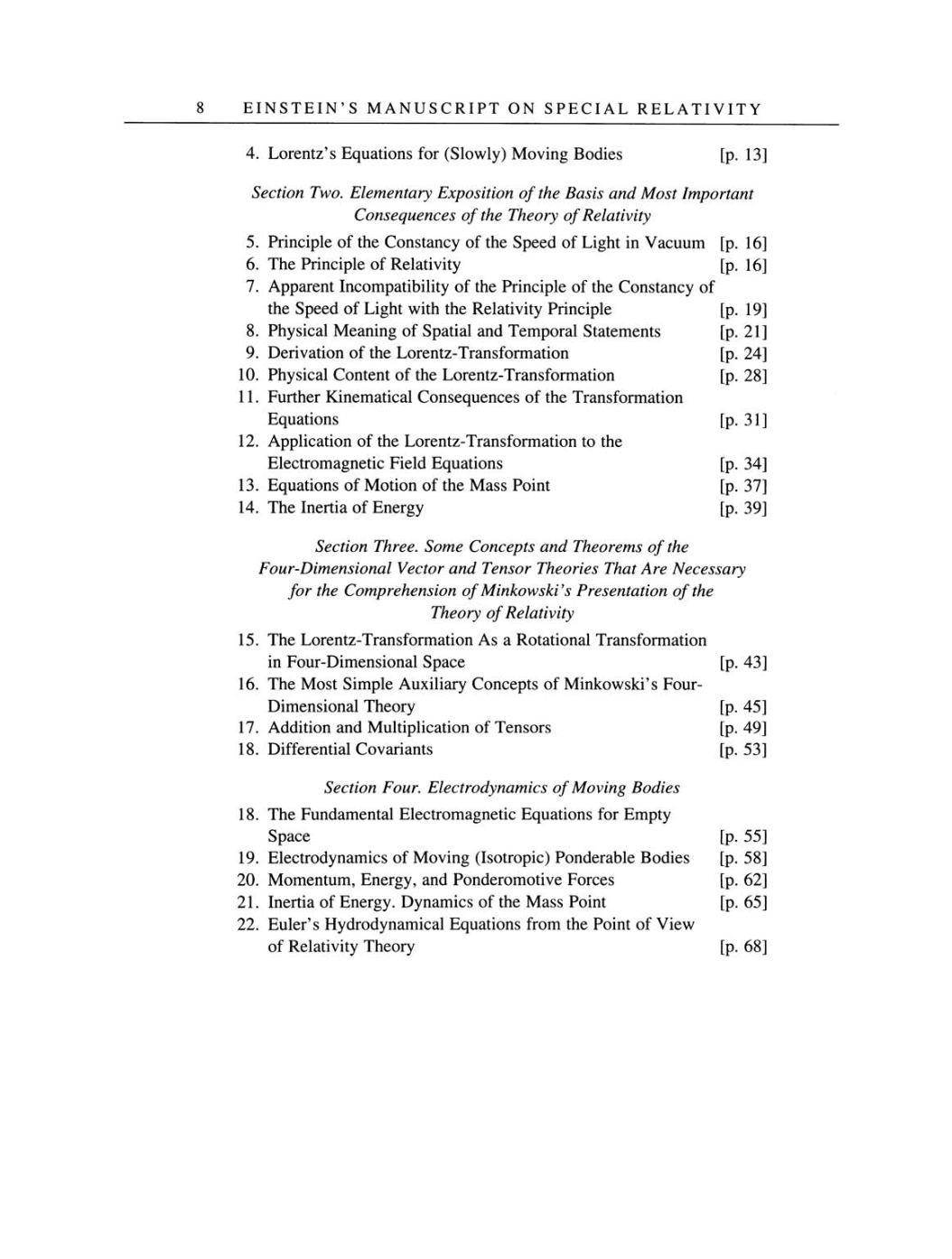8
EINSTEIN'S MANUSCRIPT ON
SPECIAL RELATIVITY
4.
Lorentz's
Equations
for
(Slowly) Moving
Bodies
[p.
13]
Section
Two.
Elementary Exposition
of the
Basis and
Most
Important
Consequences
of the
Theory
of
Relativity
5. Principle
of the
Constancy
of the
Speed
of
Light
in
Vacuum
[p. 16]
6.
The
Principle
of
Relativity
[p. 16]
7.
Apparent Incompatibility
of the
Principle
of
the
Constancy
of
the
Speed
of
Light
with the
Relativity Principle
[p.
19]
8. Physical Meaning
of
Spatial
and
Temporal
Statements
[p.
21]
9.
Derivation of the Lorentz-Transformation
[p. 24]
10.
Physical
Content of
the
Lorentz-Transformation
[p. 28]
11.
Further Kinematical
Consequences
of the Transformation
Equations
[p.
31]
12.
Application
of
the
Lorentz-Transformation
to
the
Electromagnetic
Field
Equations
[p. 34]
13.
Equations
of
Motion of the Mass Point
[p. 37]
14.
The Inertia of
Energy
[p.
39]
Section
Three. Some
Concepts
and Theorems
of
the
Four-Dimensional
Vector
and Tensor Theories That Are
Necessary
for the
Comprehension of
Minkowski's Presentation
of the
Theory
of
Relativity
15.
The Lorentz-Transformation
As
a
Rotational Transformation
in
Four-Dimensional
Space
[p. 43]
16.
The Most
Simple Auxiliary Concepts
of Minkowski's Four-
Dimensional
Theory
[p.
45]
17.
Addition and
Multiplication
of Tensors
[p.
49]
18.
Differential Covariants
[p. 53]
Section Four.
Electrodynamics
of
Moving
Bodies
18.
The Fundamental
Electromagnetic Equations
for
Empty
Space
[p.
55]
19. Electrodynamics
of
Moving (Isotropic)
Ponderable
Bodies
[p.
58]
20. Momentum,
Energy,
and
Ponderomotive Forces
[p.
62]
21.
Inertia of
Energy. Dynamics
of the Mass Point
[p.
65]
22.
Euler's
Hydrodynamical Equations
from the Point of View
of
Relativity Theory
[p.
68]
